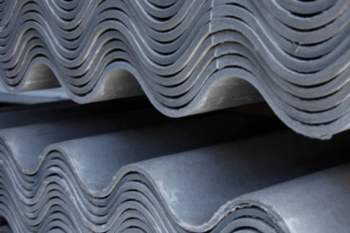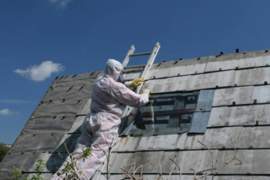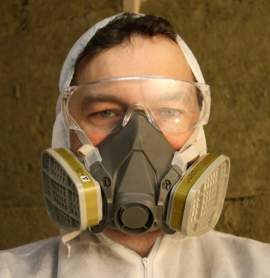
Oregon Asbestos Abatement Procedure

Must Read
The Oregon Department of Environmental Quality is responsible for ensuring complaints with Oregon asbestos abatement procedure. This includes the licensing of all professionals that work with asbestos containing materials, inspecting sites undergoing abatement and accrediting courses that train workers in proper procedure. Many homes will have asbestos containing materials although these structures tend to be not covered by state and federal regulations. Notification requirements Notifications are required for all demolitions and any instance where more than 260 linear feet, 160 square feet or 35 cubic feet of asbestos containing materials will be removed from a structure. The building owner may remove the asbestos on their own for amounts below that threshold, but must also arrange the proper transport of the materials the disposal site. Extra care should be taken to avoid secondary contamination and improper removal. A consultation with an asbestos inspector licensed by the state can guide you toward proper Oregon asbestos abatement procedure and safe disposal. Negative pressure enclosure Through the use of sheeting and a powerful HEPA filter, a negative pressure environment will be created for removing friable asbestos. This is keeping with Oregon asbestos abatement procedure. By maintaining an enclosure, you prevent possible secondary contamination. The air inside enclosure will be circulated four times during asbestos abatement. Other equipment will include decontamination showers and specialized vacuum cleaners for the removal of debris. Wet removal Wet removal of asbestos containing materials is important as waterlogged fibers do not become readily airborne, even when broken. Saturating the asbestos before removal prevents the release of thousands of fibers. Typically, most asbestos abatement requires powerful vacuums to attract all particles and sheeting enclosure to prevent any fibers that are not waterlogged from escaping. Testing in the field and laboratory are necessary to ensure that no asbestos remains after the work is completed. Possibilities for asbestos abatement In addition to complete removal, you may seal or encapsulate friable asbestos if the structure will not be demolished. This protective barrier prevents fibers from escaping and becoming airborne. Encapsulation involves the spraying of a sealant and as long as this seal is intact, there is no danger. A similar procedure, known as enclosure encases other forms of friable material, such as pipe insulation in concrete or drywall, thus rendering it indurate. None of these procedures may be used for asbestos abatement in a demolition situation. Proper disposal Small amounts of asbestos must be doubled bagged and labeled accordingly, as stated in Oregon asbestos law. The law also states that clothing worn, many materials used the abatement and subsequent cleanup and filters are disposed in the same manner, to prevent possible issues with accidental contamination. You will need to complete an asbestos waste shipment report form when you deliver the asbestos contaminated material to the landfill. Typically, large amounts of friable asbestos will be stored wet, in sealed and labeled containers, as per federal regulations.


















